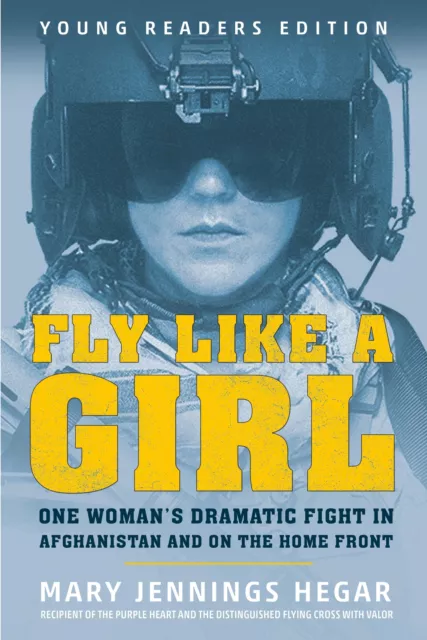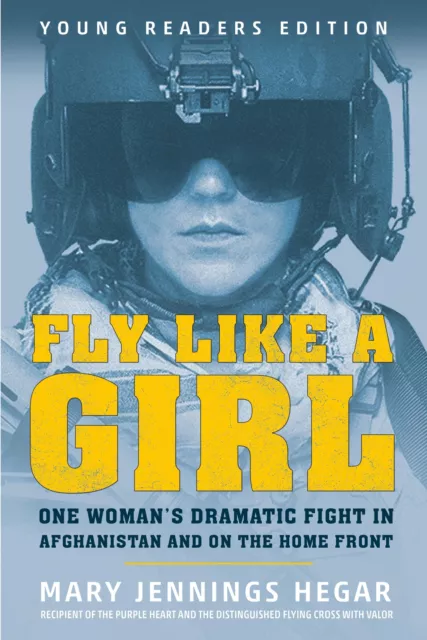Mary Jennings Hegar | Fly Like a Girl | Taschenbuch | Englisch (2021)
EUR 14,95 Sofort-Kaufen, EUR 2,95 Versand, eBay-Käuferschutz
Verkäufer: faboplay ✉️ (13.064) 99.8%,
Artikelstandort: Dissen a.T.W., DE,
Versand nach: DE,
Artikelnummer: 126420994581
Mary Jennings Hegar | Fly Like a Girl | Taschenbuch | Englisch (2021).
Fly Like a Girl
One Woman's Dramatic Fight in Afghanistan and on the Home Front
Taschenbuch von Mary Jennings Hegar
Details
Taschenbuch von Mary Jennings Hegar
Details
- Autor: Mary Jennings Hegar
- EAN: 9780593117781
- Einband: Kartoniert / Broschiert
- Inhalt: Einband - flex.(Paperback)
- Sprache: Englisch
- Seiten: 304
- Maße: 210 x 140 x 20 mm
- Erschienen: 02.03.2021
- Schlagworte: Young Adult Biography / YOUNG ADULT NONFICTION / Biography & Autobiography / Political / Women / History / Military & Wars / books for 12 year old boys / books for 12 year old girls / books for 13 year old girls / war / books for 13 year old boys / teen books for boys
- Schnelle & professionelle Abwicklung
- Kompetenter & unkomplizierter Service
- Rechnung bequem per Email
-
Versand per Deutsche Post oder DHL
- Condition: Neu
- Buchtitel: Fly Like a Girl
- Autor: Mary Jennings Hegar
- Sprache: Englisch
- Erscheinungsjahr: 2021
- Seiten: 304
- Marke: Penguin Young Readers Group
- Hersteller: Penguin Young Readers Group
- Verlag: Penguin Young Readers Group
- Format: Taschenbuch
- Titelzusatz: One Woman's Dramatic Fight in Afghanistan and on the Home Front
- Schlagworte: Young Adult Biography, YOUNG ADULT NONFICTION, Biography & Autobi
- Zielgruppe: Kinder
- ISBN: 0593117786
PicClick Insights - Mary Jennings Hegar | Fly Like a Girl | Taschenbuch | Englisch (2021) PicClick Exklusiv
- Popularität - 0 Beobachter, 0.0 neue Beobachter pro Tag, 7 days for sale on eBay. 0 verkauft, 1 verfügbar.
- Bestpreis -
- Verkäufer - 13.064+ artikel verkauft. 0.2% negativ bewertungen. Großer Verkäufer mit sehr gutem positivem Rückgespräch und über 50 Bewertungen.
Die Leute Mochten Auch PicClick Exklusiv

Hegar Mary Jennings-Fly Like A Girl Book NEU
EUR 10,33 Sofort-Kaufen 29d 6h
Hegar Mary Jennings-Fly Like A Girl HBOOK NEU
EUR 17,27 Sofort-Kaufen 29d 6h
Andrew Jennings | Write Like a Ninja | Taschenbuch | Englisch (2021)
EUR 10,49 Sofort-Kaufen 22d 20h
Hegar, M: Fly Like a Girl
EUR 14,70 Sofort-Kaufen 4d 6h
Mary Jennings Hegar Shoot Like a Girl (Taschenbuch)
EUR 13,18 Sofort-Kaufen 8d 0h
Shoot Like a Girl: One Woman's Dramatic Fight in A-1101988444, Hegar, Taschenbuch
EUR 8,18 Sofort-Kaufen
Mary Jennings Hegar Shoot Like a Girl (Taschenbuch) (US IMPORT)
EUR 21,11 Sofort-Kaufen
